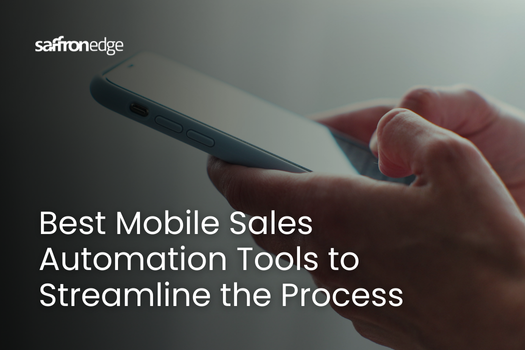Contentful CMS is a leading headless CMS that is well-known for its strong customization capabilities and scalability.
However, some users have faced challenges, such as a not-so-user-friendly interface, significant developer resource requirements, and unpredictable pricing models.
You are in the right place if you seek an alternative to Contentful that better suits your needs.
This blog will give you the top 10 Contentful alternatives for 2025 to help you find the ideal content management solution.
How to Choose the Right Contentful Alternative?
The best Contentful alternative for you depends on your specific requirements, such as:
- Features: Consider the features offered by each CMS, including content modeling, API flexibility, and integrations.
- Scalability: If you anticipate significant growth, ensure the CMS can handle your future needs.
- Cost: Evaluate pricing models and consider factors like usage-based pricing or upfront licensing fees.
- Ease of Use: Consider the learning curve and user-friendliness of the CMS.
- Community and Support: Look for a CMS with a strong community and active support forums.
By carefully evaluating these factors, you can select the Contentful alternative that best aligns with your organization's goals and requirements.
The Only Contentful Alternatives You’ll Ever Need
1. Storyblok
Storyblok is a great alternative to Contentful, offering an easy-to-use, cloud-based content management system (CMS) that works well with any website design tool or software. Its main advantage is that it lets users easily put together and change their website's layout without needing to start over. Due to its simple drag-and-drop editor, it's perfect for people who need to be tech-savvy.
One of its unique features is its ability to handle multiple languages easily, making it an excellent choice for global businesses. Furthermore, its transparent pricing model helps companies better plan their budgets.
Storyblok has earned significant recognition for being user-friendly and offering a great return on investment, especially for small businesses. Users also rank it highly in industry reports, positioning it as a leading contentful services platform.
2. Hygraph
Hygraph is a headless GraphQL content platform that offers a seamless experience. Hygraph's intuitive interface and efficient data retrieval through GraphQL make it a strong contender in the headless CMS space.
Hygraph's versioning system ensures that content management is organized and efficient, while its flexible architecture allows for easy integration with various technologies. However, users unfamiliar with GraphQL may face a learning curve, and pricing can vary based on usage rates and included features.
Despite these challenges, Hygraph is a powerful tool for prioritizing a streamlined content management experience without sacrificing flexibility.
- Set up triggers to identify abandoned carts and initiate a recovery sequence.
- Create a series of reminder emails, starting with a gentle nudge and potentially escalating to a special offer.
- Experiment with different channels like email, SMS, or web push notifications to determine which works best for your audience.
- Use dynamic content to display the abandoned items and make it easy for customers to complete their purchases.
- A/B tests different message styles, timings, and incentives to optimize your recovery rate.
3. WordPress
WordPress is a well-known open-source CMS that offers an accessible alternative to Contentful. While WordPress is traditionally a monolithic system rather than headless, it still provides a high level of customization through its vast plugins.
This makes WordPress, a great contentful alternative, as a versatile option for users who want to maintain control over their content while benefiting from a user-friendly interface.
WordPress is an open-source platform, and this is one of its major strengths because developers can modify it significantly. However, this can also introduce security concerns, as users must rely on third-party plugins that may not always be up to date. While WordPress is free, users must set a budget for hosting and other associated costs.
WordPress is widely used by businesses, especially those that require flexibility and simplicity in their content management systems.
4. Ghost
Ghost is a CMS designed with simplicity in mind. It offers a clutter-free interface and powerful blogging capabilities, making it ideal for content creators who want a straightforward platform without unnecessary complexity.
While Ghost excels at blogging, it may not best fit more complex content management needs. Achieving advanced functionality may require integrating additional tools, which could increase the platform's overall cost and complexity.
Nevertheless, Ghost is an excellent choice for users who prioritize a clean, user-friendly interface and a focus on content creation.
5. Typo3
Typo3 is a powerful and scalable alternative to Contentful. It offers a highly flexible CMS that caters to a wide range of needs. Its multilingual support and customizable architecture make it a powerful tool for companies operating in diverse markets.
However, Typo3 is a contentful alternative with flexibility that comes with a steep learning curve, particularly for new platform users. In addition, it requires more server resources than some of its simpler counterparts, which could be a consideration for smaller businesses with limited technical resources.
Despite these challenges, Typo3 remains popular for enterprises requiring a highly customizable and scalable CMS solution.
6. Umbraco
Umbraco is an open-source CMS built on the .NET framework that offers a flexible and scalable alternative to Contentful. It is a developer-first platform that provides extensive customization options for businesses that require a tailored content management solution.
Umbraco's open-source nature allows for extensive customization, but it also means that non-technical users may need help navigating the platform. This makes Umbraco a better fit for companies with dedicated developer resources than those requiring frequent updates from non-technical staff.
For businesses prioritizing flexibility and scalability, Umbraco is a strong contentful alternative that offers a high degree of control over content management.
7. Kontent.ai
Kontent.ai is a cloud-based headless Content-as-a-Service (CaaS) platform that excels in omnichannel content delivery. Kontent.ai's flexible pricing and established partner program make it a compelling alternative to Contentful for businesses that need a scalable and adaptable CMS.
Kontent.ai's architecture supports multi-environment setups, making it ideal for enterprises with complex content delivery needs. However, similar to Contentful, the pricing structure can become unpredictable depending on the project's scope.
Despite these considerations, Kontent.ai is a powerful platform for businesses that require a robust and scalable content management solution.
8. Strapi
Strapi is a headless CMS powered by JavaScript that prioritizes a developer-first approach. As an open-source platform, Strapi offers a high degree of customization, making it an attractive alternative to Contentful for businesses with specific technical requirements.
Strapi's flexible architecture and active developer community make it a versatile platform for building custom content solutions. While it may not offer as many plugins and extensions as some competitors, Strapi's user-friendly interface and ease of use make it a popular choice for developers who want a balance between customization and simplicity.
For businesses that value a developer-friendly CMS that focuses on JavaScript, Strapi is a solid alternative to Contentful.
9. Joomla
Joomla is another open-source CMS that offers a user-friendly alternative to Contentful. Joomla's active user community and extensive library of extensions make it a versatile platform for businesses of all sizes.
While Joomla is more accessible than some of its open-source counterparts, it still presents a learning curve for new users., as with all open-source CMS platforms, security vulnerabilities can be a concern, mainly when relying on third-party extensions.
Despite these challenges, Joomla remains a popular choice for businesses seeking a flexible and customizable CMS accessible to technical and non-technical users.
10. Contentstack
Contentstack is a headless CMS designed for enterprise-level projects. It offers multi-environment support, flexible content modeling, and scalable architecture, making it a powerful alternative to Contentful for large-scale content management needs.
However, Contentstack's complexity means that users may need to invest in developer resources to fully leverage the platform's capabilities.
Contentstack is a top choice for enterprises that require an advanced and scalable content management solution.
Conclusion: What's the Best Contentful Alternative?
Choosing the best Contentful alternative depends on your specific needs, whether that’s ease of use, scalability, pricing, or a particular feature set. Each platform listed above offers unique strengths that make them suitable alternatives to Contentful for different use cases. Take advantage of free trials and demos to find the CMS that best aligns with your business goals.
Building Websites For High Conversions
Frequently Asked Questions
1. What is the main advantage of choosing an alternative to Contentful?
Choosing a Contentful alternative can offer benefits such as better pricing, a more user-friendly interface, or features tailored to your specific content management needs. It also allows you to explore platforms that align better with your team’s technical expertise.
2. How does SEO performance differ across Contentful and its alternatives?
The contentful SEO performance largely depends on how well the CMS integrates with your existing SEO tools and practices. Some alternatives, like Storyblok and Joomla, offer strong SEO capabilities right out of the box, while others may require additional customization.
3. Can I migrate from Contentful to one of these alternatives easily?
Migrating from Contentful to an alternative to Contentful typically involves exporting and reconfiguring your content in the new CMS. The ease of migration depends on the complexity of your content structure and the compatibility of the platforms. Many CMS providers offer migration tools or services to assist with the process.
Related Blogs
We explore and publish the latest & most underrated content before it becomes a trend.
7 min read
The 8 Best CRM Email Marketing Automation Platforms: Features, Pros & Cons
By Sabah Noor
Subscribe to Saffron Edge Newsletter!

Building Websites For High Conversions










